Tuna species are some of the most sought-after fish in the world, known for their impressive size, speed, and commercial value. The largest tuna species in the world not only play crucial roles in their marine ecosystems but are also central to global fisheries. From the smallest blackfin tuna to the gigantic Atlantic bluefin, each species has unique characteristics and habitats. This comprehensive guide explores the largest tuna species, highlighting their sizes, locations, and key features.
8. Blackfin Tuna

- Size: Approximately 3.25 feet long, weighing around 45 lbs.
- Location: Eastern coast of the Americas.
- Key Feature: Smallest of the Thunnus genus.
The Blackfin Tuna (Thunnus atlanticus) is the smallest among the major tuna species. These fish are easily recognized by their black oval bodies, complemented by yellow accents towards their finlets and sides. A distinctive dark stripe runs across the part of the eye, giving it a unique appearance. They also boast a striking yellow or gold lateral band that fades post-mortem, and their silver abdomen is marked by vertical rows of pale spots.
These migratory tuna thrive in the warm coastal waters of the Western Atlantic, where they often form large schools alongside skipjack tuna. Their diet consists mainly of smaller fish, squid, and shrimp. Despite their smaller size, blackfin tuna are powerful swimmers, exhibiting the torpedo-shaped physique typical of the genus.
7. Albacore Tuna
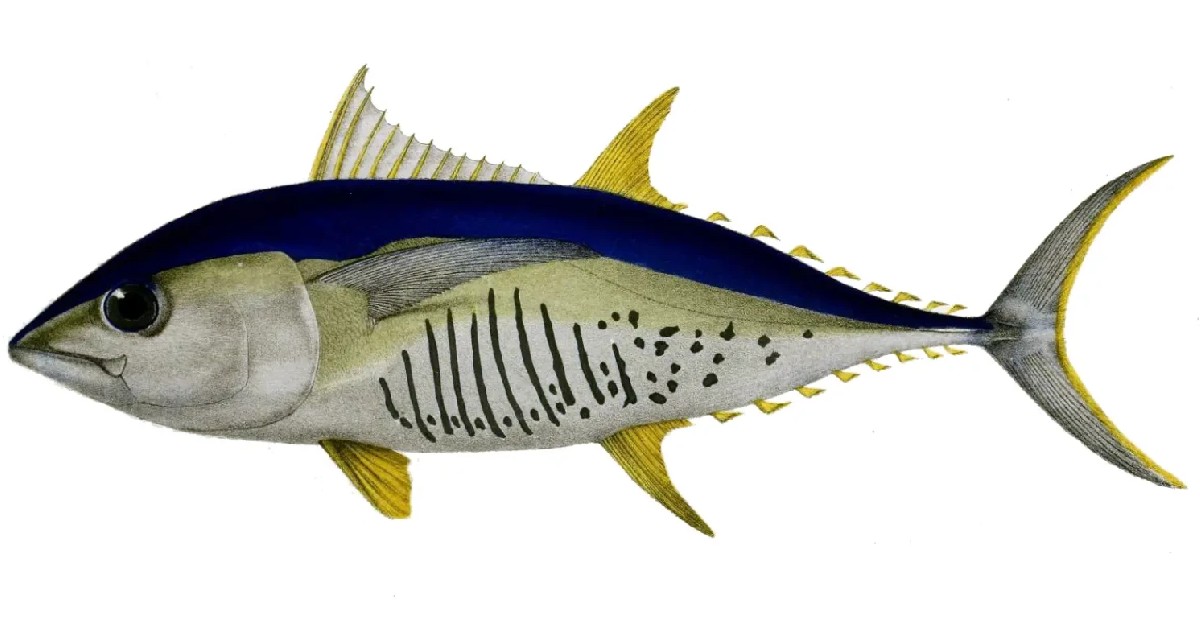
- Size: Up to 4.5 feet long, weighing around 130 lbs.
- Location: Atlantic, Pacific, and Indian Oceans.
- Key Feature: Long pectoral fins and wide-ranging migrations.
Albacore Tuna (Thunnus alalunga) are renowned for their bullet-like shape and the dark blue coloring on their backs, which transitions to a lighter blue-gray on the sides and belly. These tuna are often seen migrating across all major oceans, including the Mediterranean, usually traveling in schools composed solely of their species.
Albacore tuna are particularly notable for their long pectoral fins, which can sometimes be as long as their body. They have a diverse diet that evolves as they age, shifting from primarily squid to a variety of fish, such as saury, lanternfish, and rockfish. Their ability to live for up to 12 years and their widespread presence makes them a critical component of marine ecosystems worldwide.
6. Longtail Tuna
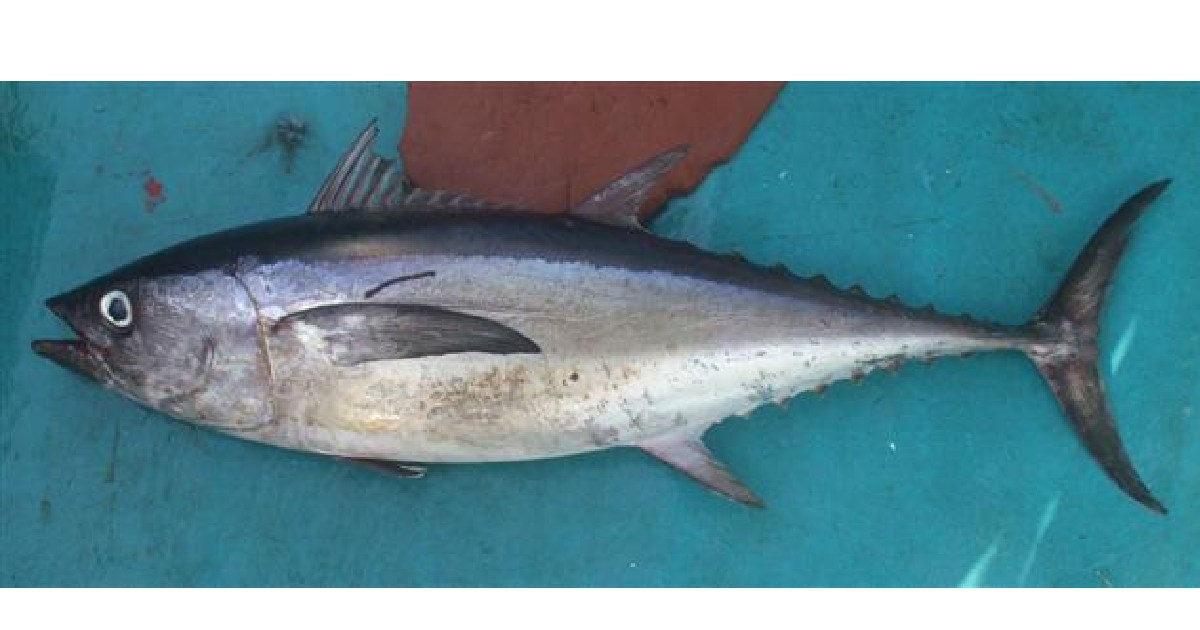
- Size: Approximately 5 feet long, weighing around 80 lbs.
- Location: Coastal waters around Australia.
- Key Feature: Distinct long tail and slim body.
The Longtail Tuna (Thunnus tonggol), also known as the Northern Bluefin Tuna, is part of the Scombridae family, closely related to other bluefin tuna species. These fish are characterized by their dark blue backs, small pectoral fins, and elongated bodies. Notably, they feature colorless patches on their bellies and undersides, making them easy to identify.
Longtail Tuna are primarily found in the tropical waters around Australia, frequenting the eastern and western coastlines during the warmer summer months. Their streamlined bodies enable them to swim swiftly and efficiently, a necessary adaptation for thriving in these regions. They play a crucial role in the marine food web, balancing populations of smaller fish and other marine life.
5. Yellowfin Tuna

- Size: Up to 8 feet long, weighing around 400 lbs.
- Location: Worldwide, in warm waters.
- Key Feature: Distinct yellow finlets and rapid growth.
Yellowfin Tuna (Thunnus albacares) are among the most important fisheries species due to their size, speed, and widespread distribution. These impressive fish can reach lengths of up to 8 feet and weigh 400 pounds. Known for their striking yellow finlets and streamlined bodies, they are powerful and agile predators.
Yellowfin Tuna undertake extensive migrations each year, often covering vast distances. Their reproductive strategy involves broadcast spawning, where multiple females and males release millions of eggs and sperm into the water simultaneously. This ensures a high rate of fertilization and contributes to their rapid growth and population sustainability. These traits make yellowfin tuna a vital species for both commercial and ecological purposes.
4. Bigeye Tuna

- Size: Up to 8 feet long, weighing around 465 lbs.
- Location: Pacific, Atlantic, and Indian Oceans.
- Key Feature: Large eyes and deep-water habitat.
Bigeye Tuna (Thunnus obesus) are similar to yellowfin tuna but generally smaller and distinguished by their large eyes and deep-water habits. They can reach lengths of 8 feet and weigh 465 pounds. Their metallic blue backs and almost white bellies provide effective camouflage in the pelagic zone where they live.
Bigeye Tuna are found in tropical and subtropical waters of the Pacific, Atlantic, and Indian Oceans. They are known for their extensive migrations and ability to inhabit deeper waters than many other tuna species, often diving to depths of 250 meters. This adaptation allows them to access different prey and avoid predators, making them a versatile and resilient species in the marine environment.
3. Southern Bluefin Tuna
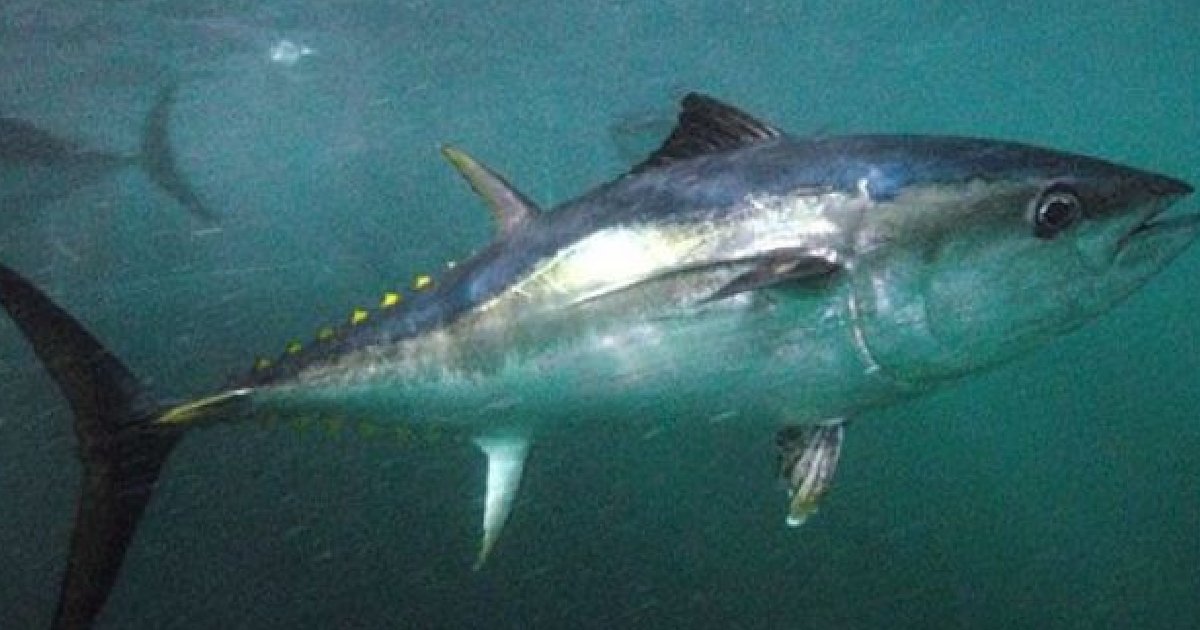
- Size: Up to 8.5 feet long, weighing around 573 lbs.
- Location: Southern Hemisphere, primarily in the Indian Ocean.
- Key Feature: Endangered status with significant commercial value.
The Southern Bluefin Tuna (Thunnus maccoyii) is a large, commercially valuable fish primarily caught by long-liners from Indonesia and Japan in the Indian Ocean, where they breed. These fish can reach up to 8.5 feet in length and weigh as much as 573 pounds if allowed to mature for about 12 years.
Southern Bluefin Tuna has swim bladders and silvery-white undersides. Their first dorsal fin can be yellow or blue, while their anal fin and finlets have a yellow base with black edges. These fish are marked by rows of corresponding dots and colorless transverse lines, adding to their distinctive appearance. Despite their commercial importance, they are listed as endangered due to overfishing, highlighting the need for sustainable management practices.
2. Pacific Bluefin Tuna
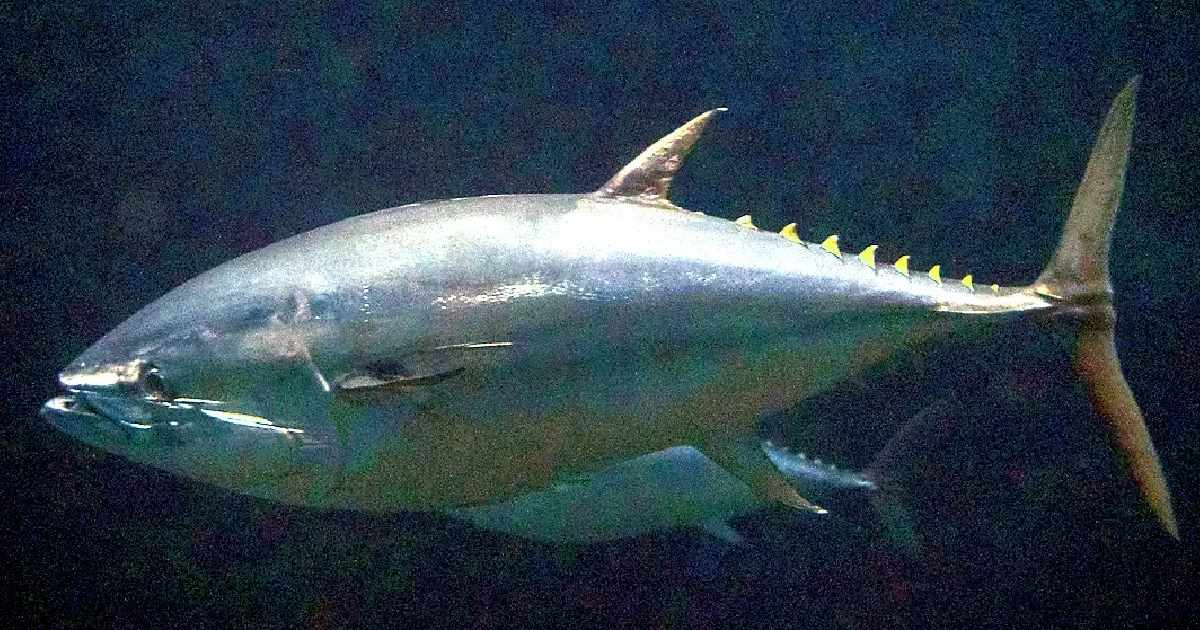
- Size: Up to 10 feet long, weighing around 1000 lbs.
- Location: Northern Pacific Ocean.
- Key Feature: Highly migratory with exceptional speed.
The Pacific Bluefin Tuna (Thunnus orientalis) is a robust swimmer designed for endurance and speed. This species can travel thousands of kilometers across the Pacific Ocean in a matter of weeks, demonstrating their remarkable migratory capabilities. They can reach lengths of 10 feet and weigh up to 1000 pounds.
Pacific Bluefin Tuna are known for their ability to swim in cold northern waters and dive to depths of 1800 feet. Their internal temperature often exceeds the water temperature, enabling efficient metabolism and high-speed swimming. These adaptations make the Pacific Bluefin a formidable predator and a prized catch for commercial fisheries. Their near-threatened status underscores the need for conservation efforts to ensure their survival.
1. Atlantic Bluefin Tuna
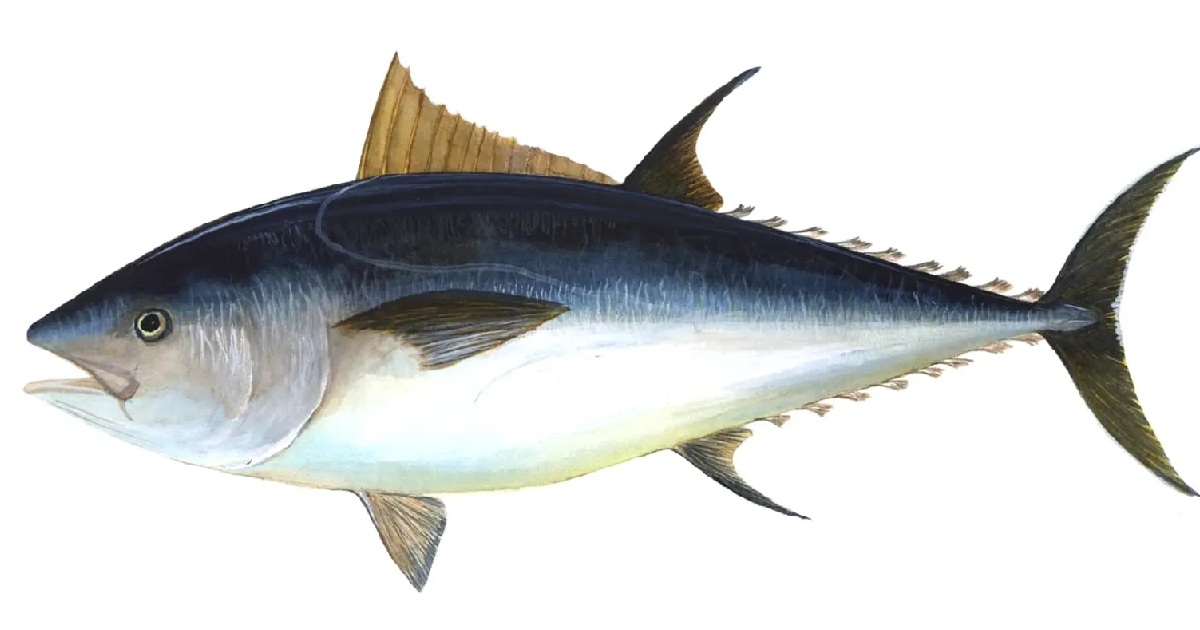
- Size: Up to 15 feet long, weighing around 1,500 lbs.
- Location: Atlantic Ocean.
- Key Feature: Largest tuna species with a wide range.
The Atlantic Bluefin Tuna (Thunnus thynnus) is the largest tuna species in the world, reaching lengths of up to 15 feet and weighing around 1,500 pounds. These fish are sleek, torpedo-shaped, and capable of incredible speed and endurance. They are found throughout the Atlantic Ocean, from the frigid waters of Newfoundland and Iceland to the warmer waters of the Gulf of Mexico and the Mediterranean Sea.
Atlantic Bluefin Tuna are warm-blooded, a rare trait among fish, allowing them to thrive in diverse environments. Their reproductive strategy and wide range of habitats contribute to their significant ecological and commercial value. However, their populations are threatened by overfishing, particularly in Europe, where they are listed as threatened. Conservation measures are essential to protect this iconic species and ensure its continued presence in our oceans.
Conclusion
The largest tuna species in the world are fascinating and vital components of marine ecosystems. From the relatively small blackfin tuna and Indian Ocean yellowfin tuna to the massive Atlantic bluefin, each species brings unique attributes and challenges. Understanding and conserving these remarkable fish are crucial for maintaining the health of our oceans and the sustainability of global fisheries, the same value as how we protect our endangered sea turtles.
We might just think of them as food like canned and pouched tuna. Remember, before you catch tuna, either for food, such as canned tuna or light tuna, they really play a great role in the ecosystem. By recognizing the importance of these species of tuna, including those not mentioned, and promoting sustainable fishing practices, we can help ensure that future generations will continue to marvel at the magnificence of the world’s largest tuna.
Frequently Asked Questions (FAQs)
What species of tuna is the largest?
The Atlantic Bluefin Tuna (Thunnus thynnus) is the largest species of tuna in the world. These impressive fish can grow up to 15 feet in length and weigh as much as 1,500 pounds. Known for their incredible speed and endurance, Atlantic Bluefin Tunas are highly prized in commercial fishing, especially in the sushi and sashimi markets, due to their size and quality.
What is the largest tuna ever found?
The largest tuna ever recorded was an Atlantic Bluefin Tuna caught off the coast of Nova Scotia, Canada, in 1979. This gigantic fish weighed in at 1,496 pounds and measured nearly 12 feet in length. This record-breaking catch highlights the immense size that Atlantic Bluefin Tunas can reach, underscoring their status as the largest tuna species in the world.
What is the biggest and smallest tuna?
The biggest tuna species is the Atlantic Bluefin Tuna, which can grow up to 15 feet long and weigh up to 1,500 pounds. On the other end of the spectrum, the Blackfin Tuna (Thunnus atlanticus) is one of the smallest species, typically reaching around 3.25 feet in length and weighing up to 45 pounds. Despite their size differences, both play crucial roles in their respective ecosystems.
What tuna is the most expensive?
The most expensive tuna is typically the Pacific Bluefin Tuna (Thunnus orientalis), especially those caught in Japanese waters. These tunas are highly valued for their rich, fatty flesh used in high-end sushi and sashimi. Record prices have been set at Tokyo’s Tsukiji Fish Market, where a single tuna has sold for millions of dollars, reflecting its culinary and cultural significance.
Who eats the most tuna in the world?
Japan is the largest consumer of tuna in the world. The country’s culinary culture, particularly its emphasis on sushi and sashimi, drives a high demand for various tuna species, including the prized Pacific Bluefin Tuna. Japanese markets and restaurants source tuna globally, making Japan a significant player in the international tuna industry and a major influencer in tuna fisheries management.

